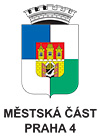Collective Exhibition for a Single Body: The Private Score – Vienna 2019
typ výstavy: kolektivní
místo konání: Haus Wittgenstein
termín: 2019/06/19 - 2019/06/28
poznámka:
Další umělci: Jani Christou, Jakob Lena Knebl
Haus Wittgenstein, Vienna
Lidl food market on Wiedner Hauptstraße, Vienna
Tanzquartier Wien
With works and performances by Milan Adamčiak, Geta Brătescu, André Cadere, Cornelius Cardew, Jani Christou, Josef Dabernig, Anna Daučíková, VALIE EXPORT, Stano Filko, Marcus Geiger, Tomislav Gotovac, Ion Grigorescu, Nilbar Güreş, Sanja Iveković, Anna Jermolaewa, Jakob Lena Knebl, Július Koller, Jiří Kovanda, Katalin Ladik, Simon Leung, Adolf Loos, Sarah Lucas, Marcello Maloberti, Vlado Martek, Dóra Maurer, Karel Miler, Ivan Moudov, Paul Neagu, Neša Paripović, Manuel Pelmuş, Nedko Solakov, Petr Štembera, Mladen Stilinović, Sven Stilinović, Ceija Stojka, Raša Todosijević, Slaven Tolj, Goran Trbuljak, Ludwig Wittgenstein, Artur Żmijewski
Display and Interior Design: Jakob Lena Knebl
“Collective Exhibition for a Single Body – The Private Score – Vienna 2019” is an exhibition of performances created by artists from Central, Eastern, and Southeastern Europe that were activated from works present in private collections in Vienna.
The project is based on an original exhibition score conceived by Pierre Bal-Blanc and was launched for the first time at documenta 14 in Athens/Kassel in 2017 according to the artists that were featured in the exhibition. “The Private Score” is this score's second version and was produced in Vienna at the initiative of the Kontakt collection with its resources expanded by the collections of the TBA21and works also represented in the collection of Generali Foundation.
For this iteration, the curator together with Romanian choreographer and artist Manuel Pelmuş investigated gestures once generated in 1960s and '70s Eastern Europe in close dialogue with the artists. It included works in the abovementioned collections by figures active after 1989 who re-activated the emancipatory potential of the socialist Neo-Avantgarde.
The gestures and movements inherent in the artworks were translated into a score and activated in an aleatory fashion, being continuously repeated by performers in everyday situations.
The activation of the artworks were resituated via the performers' presence during opening hours in the Lidl food market on Wiedner Hauptstraße; the choice of this location relates to the former use of this space, which hosted the exhibition program of the Generali Foundation and its conversion into a new purpose. This intrusion into the regular commercial activity of the food market questions the conditions of this building's use, conditions that have been subject to frequent changes over the past decades.
The reiteration and updating of the works in this context, in turn, points back to the pre-1989 efforts of Central, Eastern and Southeastern European artists to resist a politically dominant narrative and develop artistic counter-strategies.
The original artworks from the Austrian collections that form the starting point for these performative movements and gestures were shown at Haus Wittgenstein along with further works from the three collections.
Haus Wittgenstein, which is viewed as an icon of Austrian modernist architecture and houses the Bulgarian Cultural Institute, was designed by Ludwig Wittgenstein in 1926 and constructed by the Adolf Loos student Paul Engelmann for Wittgenstein's sister Margaret Stonborough-Wittgenstein. The building was in danger to be demolished, but after heavy protests by renowned Viennese architects, artists and preservationists, it was saved and bought by the People's Republic of Bulgaria in 1975.
With its unique history, this building who hosted at this occasion the works of the Viennese private collections emphasis the challenge of the legacy in matter of art and in terms of both cultural exchange between Austria and Bulgaria and its association with Southeastern Europe.
The subtle gestures of the performers at the Lidl food market referenced the performative tactics seen in the works shown at Wittgenstein Haus, offering a contemplative antipode to an over-stimulated capitalist society in its constant striving for optimization and efficiency.
At Tanzquartier Wien, the project was contextualized by a discourse-focused event entitled Parallax Views – The Cultural Logic of the Private Foundation in Late Capitalism.










